The engine's in the Beetle. (Yay!)
I got the engine up and installed, and the upper engine mount bolts in on Sunday night. However, I couldn't find my 17mm combination wrench. The area around the lower mount bolts is very tight, between the transmission and the frame, so I couldn't get any of the other wrench combinations that I had in there to tighten those nuts.
While out on errands Monday, I snagged a swivel-head ratchetting 17mm combination wrench to use. It worked perfectly:
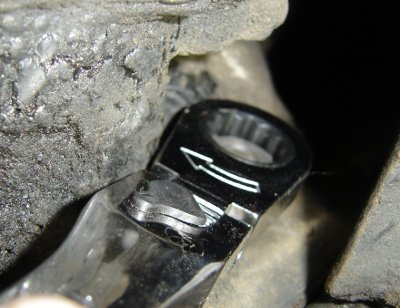
As I move closer to taking trips in the vintage Beetle, these tools will definitely go on permanent station in the tool box that goes along with it at all times:
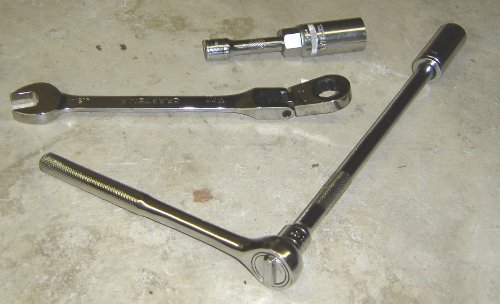
The middle wrench is the new snazzy wratchetting 17mm. That's for the lower two and the upper right mounting nuts for the engine. The long socket extension on the right and the 17mm socket is for the upper-level engine mount bolt. The short extension and the magnetic spark plug socket is for installing and pulling spark plugs. I want to be able to do this on the road if I have to. (By the way, if you've ever used one of the never-grips-anything-correctly-rubber-washer-type spark plug socket, and then you use a magnetic one, you'll never go back.
Here's the engine as a started the evening. Wires and hoses still more or less hanging out.
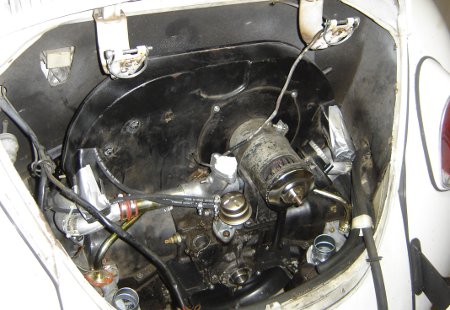
I want to make sure that the generator's going to work, and determine if I need to polarize it. Instead of hauling my test battery up from the basement, I decided to do a functional test. If you have the engine running, I've read this as a test for the alternator itself (without the regulator). Bridge the "field" terminal to the generator's ground:
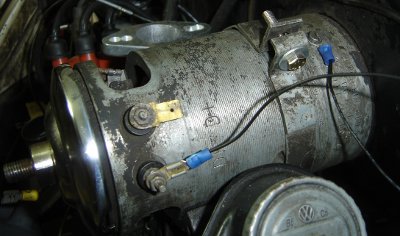
set the meter to measure volts at the output terminal vs. ground, and set to measure mv
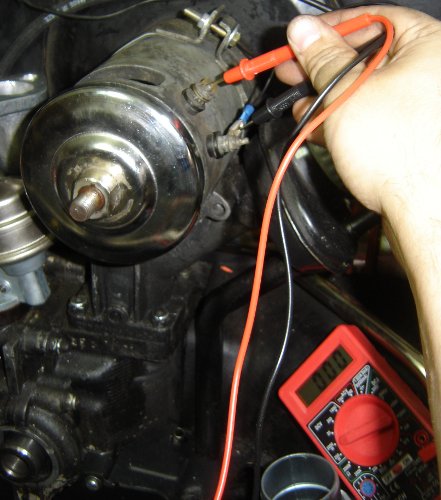
And then while holding the probes with one hand, spin the pulley with the other. The generator seems to be fine; doesn't need polarization.
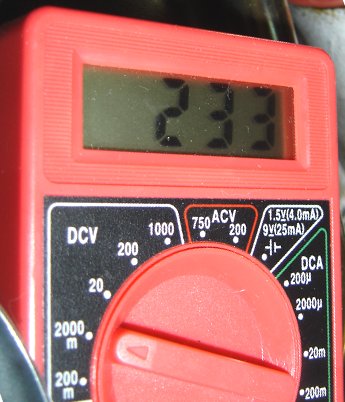
200 milivolts isn't much brag about, but remember, the generator is probably turning a dozen or so rpm, whereas at idle in the engine, it will be turning at least 1600 rpm. (The engine idles at around 800 rpm, and the generator/fan pulley is at least 2 to 1 from the crankshaft pulley.)